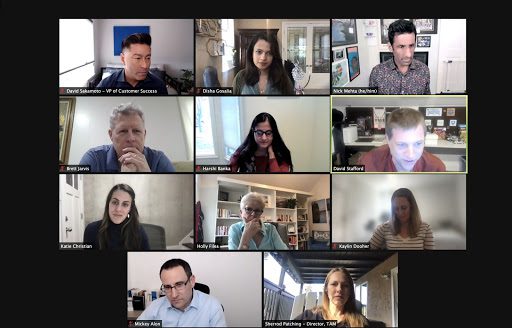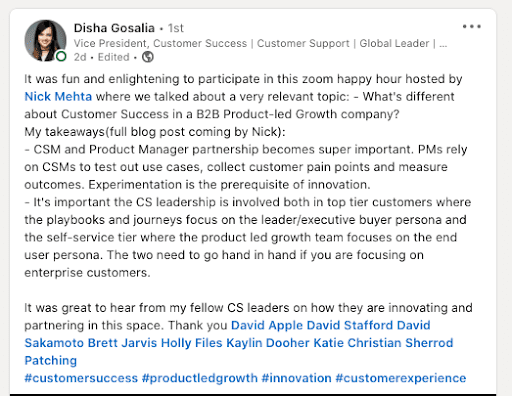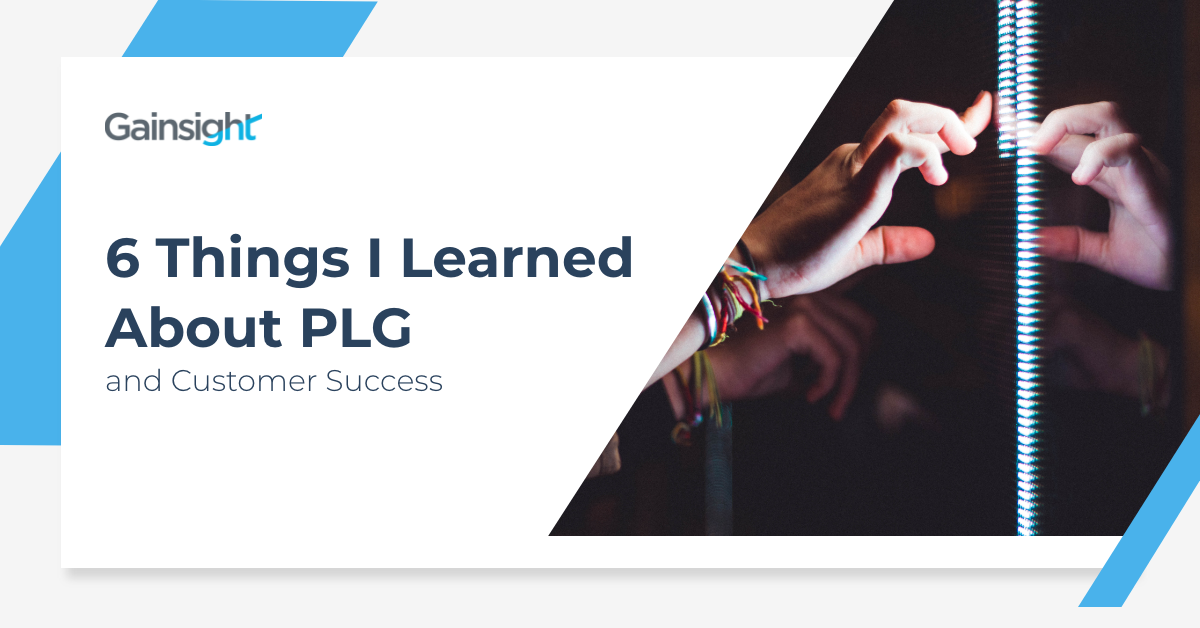
Have you ever heard the one about the client that “was a little different than your other customers?” In the Customer Success world, this scenario has become a bit of a joke. Indeed, we even wrote a parody song last year about this (“every client’s like a snowflake”).
So when a Customer Success leader, as one of OUR clients, tells us about how different they are, it’s reasonable to be a bit skeptical. Yet, one cohort of CS leaders exists that I’ve found to truly be special snowflakes: Customer Success teams in companies that employ Product-led Growth strategies.
As such, I was excited to get CS execs together last week from “unicorn” companies that are leaders in Product-led Growth—Gitlab, New Relic, Lucid, Dropbox, Calendly, Auth0, and Pagerduty.
As with all Gainsight events, we opened up with an icebreaker themed to our company value of “Child-like Joy”: “What’s the first vacation you plan to take post-vaccination?” It was energizing to hear peoples’ excitement about traveling again. Many great trips are booked, but the attendee who has a cruise to Antarctica in December certainly won the day.

David Sakamoto and Sherrod Patching kicked off the content sharing their story of building Customer Success at Gitlab. Because the product is so technical, the CS team includes the traditional CSM role as well as Technical Account Managers and Solutions Architects. Gitlab shared how they have driven an integrated customer journey across these teams by methodically documenting their processes. Indeed, since Gitlab is so transparent, you can see their approach, including how they leverage Gainsight, in their online handbook.
Finally, for the main event, we asked the group to crowdsource a list of things that make Customer Success in the PLG world different. Here are the top 6 insights:
1. CS Teams In PLG Companies Shine a Light On Customer Stories
Several attendees remarked that part of their job is sharing the stories about enterprise customers who may have adopted the product in a “bottoms up” manner but now have significant adoption within one company. They talked about the importance of “show and tells” for the company to learn enterprise use cases.
“The first time we shared stories with our product team, they were like ‘whoa, we have some big customers.’ They left energized by our work and wanted to learn more.”
2. CS Teams in PLG Companies Help Advocate for Early Enterprise Requirements
Since companies often start with one product team building for all use cases, the Customer Success team ends up being the early conduit for corporate customers’ needs. CSMs spot repeated corporate requirements and help funnel these to Product Management. Over time, this frequently leads to dedicated product teams within these companies focused on larger clients’ needs. And CS teams then help close the feedback loop with enterprise clients, so they feel like the vendor is truly listening to their needs.
3. CS Needs to Plan for “Tech Touch” from Day 1
Many traditional enterprise software companies design their customer engagement models around the needs of their largest clients, thinking they will get to the needs of smaller customers “over time.” This works fine since most of these businesses have the 80/20 Pareto rule in their revenue—80% of revenue comes from the top 20% of clients.
Because Product-led Growth allows for bottoms-up adoption and SMB usage, it often breaks the 80/20 model. As such, CS teams need to think about how their approach will scale to small clients from the beginning. They are planning digital journeys, hybrid engagement models, and in-app experiences from the start of their CS strategy.
4. Lessons from High Touch Get Applied to Tech Touch
That being said, the leaders shared that they are constantly looking at their hands-on, “high touch” CS model as a laboratory. They test new engagement models and determine what works. And then they take the winning plays and scale them to the entire base.
5. Adoption Analytics Are Vital
While traditional software companies have senior relationships with stakeholders at clients who make the renewal decision, PLG companies are often subject to users’ whims across many parts of an organization. As such, it’s not always easy to understand the client’s goals, business objectives, or ROI desires. They need to look at adoption data as a proxy.
Multiple attendees reported having data science teams embedded in the Customer Success group to help parse through adoption data and determine indicators that correlate with customer value and “stickiness.” While every CS team in the world wants this type of information, for CS execs in PLG companies, it’s not just nice to have—it’s vital.
6. Sales and “Post-sales” Tend to Be More Integrated
While the traditional software model had a clear demarcation between “pre” and “post” sale, PLG blurs the lines. Companies become “customers” in some cases with one user. Even then, they could be on a free trial. Over time, the relationship can get more significant. But even then, the client may constantly be evaluating and even using alternative, competitive tools. As such, the customer is in some ways always “in pre-sales.”
Because of this, organizational models in PLG companies tend to be more connected. One attendee shared that they now have an integrated leader who has the entire customer lifecycle underneath them. Another described his role as including both Customer Success and the pre-sales “Solutions Consultant” teams.
Overall, we had a profound discussion that highlighted the need for keeping this group of “snowflake” companies together on a more regular basis.


